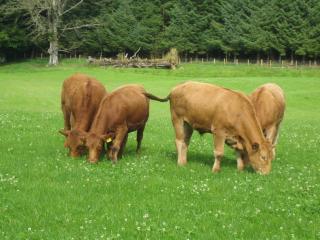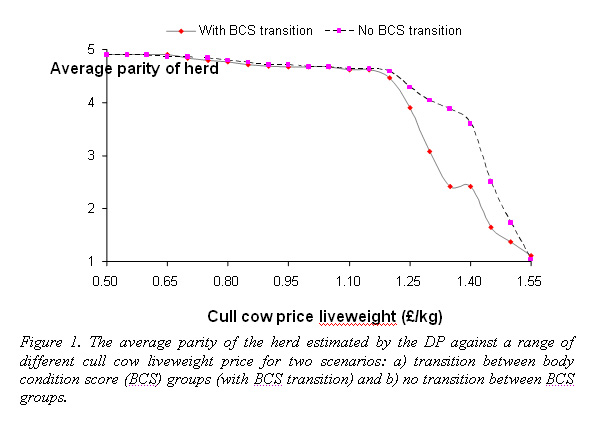Beef Cow Management in Scotland: A Sensitive Balancing Act
Published on 30 August 2010 in Sustainability and Communities , Food, health and wellbeing

Introduction
Management of beef suckler cow enterprises requires a difficult but vitally important balance between the need for farm profits, animal health and welfare and sustainable food production. The challenge is particularly important in
Key Points
This research highlights important interactions between market prices, cow management practice, farm profitability, animal welfare and environmental impact in relation to suckler cow replacement decisions. Some examples of these interactions are as follows.
The profitability of suckler cow enterprises is particularly sensitive to replacement costs and hence the cull cow market price (£/kg). High prices for cull cows may encourage replacement thus reducing herd longevity, which may not be good for animal welfare or the environment.
A high energy feeding regime incurs extra financial and environmental costs but helps cows achieve better body condition scores, generating larger and more viable calves. However, a higher body condition score also implies a higher cow weight (hence a higher sale value) and therefore these animals may present a more attractive culling proposition.
Providing a high energy diet to cows with a low or middle body condition scores will lead them to improve their condition and hence improve their welfare (due to freedom from hunger). However, this approach also promotes foetal growth that could lead to calving difficulties thus compromising welfare of cow and calf. It is therefore important to carefully manage cow body condition for optimal profit and welfare.
Research Undertaken
A decision support framework has been developed to explore the interactions between the above factors. This uses a dynamic programming (DP) model in combination with statistical models developed by SAC and BioSS. DP finds the economically optimal sequence of decisions necessary to sustain a system over a long series of cyclical production periods where decisions made in one cycle affect later ones.
It can therefore indicate the most profitable decision sequence under given circumstances, the herd structure that will emerge, its demands on farm resources and on the animals themselves. Altering the circumstances and recording the change in outcomes gives a better understanding of the trade-offs involved.
An example of the results is presented in Figure 1. This shows that at the current cull cow price (£1.07/kg liveweight) and under the assumptions used in the model, the average longevity in an optimally managed herd is 4.7 parities. An increase up to 4.9 parities may be expected if cull cow prices fall. However, a marked tipping point is predicted at cull price of £1.15/kg, where a dramatic fall in the average parity of the herd is observed as a result of the net financial benefits of a more intensive replacement rate.
The reduction happens more quickly if the transition between body condition states is accounted for. Cull cow price in Scotland reached £1.124/kg in April 2010, close to the predicted tipping point. However this does not happen in isolation and variations in prices of the other input parameters used in the model, such as calf and heifer prices and feed costs, are also expected. The impacts of these variations are being investigated and were not implemented in generating the presented result.

Policy Implications
This work demonstrates the complex, sometimes counter intuitive effects that influence the delicate balances involved in beef cow management and their possible implications for profitability, animal welfare and the environment. It therefore helps to provide decision support to a variety of stakeholders promoting sustainable beef production.
Author
Dr Bouda Vosough Ahmadi, Dr Alistair Stott, Dr Colin Morgan, Dr Mintu Nath bouda.v.ahmadi@sac.ac.uk
Topics
Sustainability and Communities , Food, health and wellbeing
Comments or Questions
Related External Documents
- Work Package 2.4 - Livestoc...
- Reducing Greenhouse Gas Emi...
- Measuring The Impacts Of Ou...
- Bush Farms







